Human Orbital Spaceflights
![]()
International Flight No. 273STS-132Atlantis (32)132nd Space Shuttle missionUSA |
 |
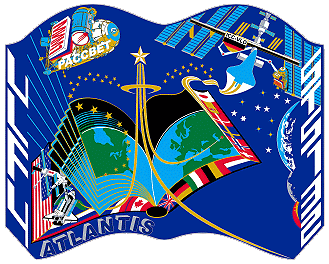 |
 |
||
![]()
Launch, orbit and landing data
walkout photo |
 |
|||||||||||||||||||||||||||||||||
alternative crew photo |
alternative crew photo |
|||||||||||||||||||||||||||||||||
alternative crew photo |
alternative crew photo |
|||||||||||||||||||||||||||||||||
alternative crew photo |
alternative crew photo |
|||||||||||||||||||||||||||||||||
alternative crew photo |
alternative crew photo |
|||||||||||||||||||||||||||||||||
Crew
| No. | Surname | Given names | Position | Flight No. | Duration | Orbits | |
| 1 | Ham | Kenneth Todd | CDR | 2 | 11d 18h 27m 59s | 186 | |
| 2 | Antonelli | Dominic Anthony "Tony" | PLT, RMS | 2 | 11d 18h 27m 59s | 186 | |
| 3 | Reisman | Garrett Erin "Big G" | MS-1, EV-2, SSRMS | 2 | 11d 18h 27m 59s | 186 | |
| 4 | Good | Michael Timothy "Bueno" | MS-2, FE, EV-3, RMS | 2 | 11d 18h 27m 59s | 186 | |
| 5 | Bowen | Stephen Gerard | MS-3, EV-1 | 2 | 11d 18h 27m 59s | 186 | |
| 6 | Sellers | Piers John | MS-4, SSRMS | 3 | 11d 18h 27m 59s | 186 |
Crew seating arrangement
|
 |
|
||||||||||||||||||||||||||||||||
Hardware
| Orbiter : | OV-104 (32.) |
| SSME (1 / 2 / 3): | 2052-2 (9.) / 2051-2 (10.) / 2047-2 (14.) |
| SRB: | BI-143 / RSRM 111 |
| ET: | ET-136 (SLWT-40) |
| OMS Pod: | Left Pod 04 (32.) / Right Pod 01 (39.) |
| FWD RCS Pod: | FRC 4 (32.) |
| RMS: | 301 (29.) |
| EMU (launch): | EMU No. 3018 (PLSS No. 1018) / EMU No. 3004 (PLSS No. 1004) / EMU No. 3011 (PLSS No. 1011) |
| EMU (landing): | EMU No. 3018 (PLSS No. 1018) / EMU No. 3004 (PLSS No. 1004) |
Flight
|
Launch from Cape Canaveral (KSC) and
landing on Cape Canaveral (KSC), Runway 33. STS-132 (ISS ULF-4 ICC, MRM-1 (now Rassvet), ERA) carried the Russian Rassvet Mini-Research Module 1 to the International Space Station. Rassvet means "dawn" in Russian. The module was built by Russian aerospace company Energia. The Mini-Research Module-1 (MRM-1) is a new Russian module that will be delivered to the International Space Station by space shuttle Atlantis on the STS-132 mission. MRM-1, which has been named Rassvet, a Russian word meaning dawn, will be used primarily for cargo storage and some payload operations. The module will be berthed to the Earth-facing port of the Zarya module using the station robotic arm on Flight Day 5. MRM-1 is 19.7 feet long (6 meters), has a maximum exterior diameter of 7.7 feet (2.35 meters) and weighs 11,188 pounds (5,075 kilograms). For its flight to the station, the ICC-1 will carry a total of 6,482 pounds (2,940 kilograms) of cargo on its internal and exterior stowage locations while in Atlantis' payload bay. On its shell, Rassvet will carry a spare elbow joint for the European Robotic Arm (ERA) and outfitting equipment for the Russian Multi-Purpose Laboratory Module (MLM), which is scheduled to launch on a Russian rocket in 2012. The outfitting equipment will include a radiator, an airlock for payloads, and a Portable Work Post (PWP) that will provide a spacewalk worksite for ERA activation, checkout, and operations. Once MRM-1 is installed on its Zarya port, its 614 cubic feet (17 cubic meters) of pressurized volume, will increase the space station's total pressurized volume to 29,561 cubic feet (837 cubic meters), and its 207 cubic feet (5.8 cubic meters) will increase the total habitable volume to 12,705 cubic feet (360 cubic meters). After installation and Atlantis' departure, the station's total mass will be 815,519 pounds (369,914 kilograms). Also on board Atlantis was the Integrated Cargo Carrier-Vertical Light Deployable (ICC-VLD2) pallet, holding a Ku-band Space to Ground Antenna (SGANT), the SGANT boom assembly, an Enhanced Orbital replacement Unit (ORU) Temporary Platform (EOTP) for the Canadian Dextre robotic arm extension, Video and Power Grapple fixtures (PVGF) and six new battery ORUs. The six new batteries replaced older ones on the P6 truss of the ISS. The old batteries were placed on the ICC-VLD pallet for return to Earth. Astronauts use the Integrated Cargo Carrier (ICC) to help transfer unpressurized cargo such as Orbital Replacement Units (ORUs) from the space shuttle to the International Space Station and from the station to worksites on the truss assemblies. The carrier also is used to return items for refurbishment. The Astrium ICC, formerly provided by SPACEHAB Inc., is an unpressurized flatbed pallet and keel yoke assembly housed in the shuttle's payload bay. Constructed of aluminum, it is approximately 8 feet long (105 inches = 2.4 meters), 13 feet wide (165 inches = 4.0 meters) and 10 inches (25.4 centimeters) thick, and carries cargo on both the top and bottom faces of the pallet. Using modular elements, several pallet configurations are available, accommodating various mass capabilities and cargo envelopes. The ICC configuration flown on STS-132 is called the ICC - VLD and provides heater power and electrical connections for the ORUs. The empty weight of the ICC - VLD is 2,645 pounds (1,200 kg). The total weight of the ORUs and ICC - VLD is approximately 8,330 pounds (3,778 kg). The STS-132 assembly mission ICC - VLD will carry replacement components and spare parts for the space station. The ICC - VLD will carry six battery ORUs for the Port 6 (P6) Integrated Equipment Assembly (IEA). The P6 containing the initial station high-power components were launched on November 30, 2000. The IEA contains 12 Battery Subassembly ORUs (six batteries) that are charged from the solar arrays during sunlit periods and provide station power during eclipse and maintenance periods. Previously, six of the original P6 battery ORUs were changed out during the STS-127 (2J/A) mission. Thirty-eight Individual Pressure Vessel (IPV) Nickel Hydrogen (Ni-H2) battery cells are connected in series and packaged in a battery ORU. Two ORUs are connected in series, utilizing a total of 76 cells to form one battery. Each battery is designed to deliver more than 25 amps in a low-demand orbit to as high as 75 amps to meet short peaking load requirements at a battery operating voltage range of 76 to 123 V dc. The batteries will be replaced during two spacewalks and the old ones will be returned. The six batteries weigh 2,204 pounds (1,000 kg) and have a design life of approximately six and a half years. In addition to the batteries, the ICC - VLD will have one Space-to-Ground Antenna (SGANT), one SGANT boom, and one Enhanced Orbital Replacement Unit Temporary Platform (EOTP). These components will be stored on External Stowage Platform 3 (ESP-3) on the Port 3 truss. When the ICC - VLD with the old batteries is returned to Earth aboard the space shuttle, it will weigh 6,017 pounds. The SGANT provides Ku band communication between the space station and the Tracking Data and Relay (TDRS) satellites for payload data, video to the ground and the crew Orbiter Communications Adapter (OCA). The OCA allows for telephone calls, emails and other two-way communications services. The SGANT currently is mounted on top of the Zenith one (Z1) truss. Eventually, a second Z1 boom will be mounted with an additional SGANT in a standby backup mode. If ever needed, it could be brought on line quickly. The SGANT dish measures 6 feet (72 inches = 1.8 meters) in diameter, and 6 feet (72 inches= 1.8 meters) high, including gimbals, and weighs 194 pounds (88 kg). The SGANT Orbital Replacement Unit (ORU), the SGANT Flight Support Equipment (FSE) Installation Kit, and the Small Adapter Plate Assembly (SAPA) comprise the Integrated Assembly, SGANT FSE Installation Kit (hereafter referred to as the Integrated Assembly). The installation kit is composed of hardware that provides a mechanical, structural and electrical bonding interface between the SGANT ORU and the SAPA. The SGANT FSE Installation Kit provides thermal conditioning of the SGANT ORU. The hardware is extravehicular activity (EVA) compatible. The FSE Installation Kit is used to support transportation of SGANT ORUs from Earth to orbit, cargo transfer to the in-orbit position on the International Space Station, and return from orbit to Earth. When used with the proper carrier or storage platform, the SGANT FSE Installation Kit can be used to support storage of the SGANT ORU at in-orbit station external payload sites. It can be separated from the Passive Flight Releasable Attachment Mechanism (PFRAM) Interface Plate (IP) Assembly mounted to the launch carrier, or the station stowage platform. The SGANT Boom Assembly provides power, data, and structural support to the redundant SGANT and the Space-to-Ground Transmit Receive Controller (SGTRC) units. The SGANT Boom Assembly will attach to the Integrated Truss Structure (ITS) Z1 berthing face at the original SGANT launch location for transmission of mechanical loads and vibrations. It will position and align the redundant SGANT to be ready for use should the primary SGANT fail in orbit. The Boom Attached Cables (BAC) provide an electrical interface to the SGANT and SGTRC units for power, 1553 command and control data, and Radio Frequency (RF) signals and Intermediate Frequency (IF) signals carrying International Space Station space-to-ground communications. The waveguide is also attached to the Boom Assembly and provides a conduit for Radio Frequency (RF) signals between the SGTRC and SGANT. The Enhanced ORU Temporary Platform (EOTP) is hardware supporting the operation of the Special Purpose Dexterous Manipulator (SPDM). It is built by MDA and provided as NASA Government Furnished Equipment. Return of the EOTP is not planned for this mission. The EOTP has a Passive FRAM interface, which is used to transfer launch loads. The interface structure between EOTP and the ICC-VLD is Flight Support Equipment (FSE) developed and owned by Astrium-ST. It interfaces with the PFRAM of the EOTP. The EOTP does not require power or data interfaces while on the ICC. The crew members aboard Atlantis began their first full day in space at 08:20 UTC. The day was primarily devoted to inspecting Atlantis's thermal protection system, using the shuttle's robotic arm and the Orbiter Boom Sensor System (OBSS) to look for any signs of launch damage. Before the thermal protection checkout began, the crew encountered a problem with the Laser Dynamic Range Imager (LDRI) and the Intensified TV Camera (ITVC), due to a snagged cable in that system's pan and tilt unit. As a result, Mission Control decided to switch to the less-capable backup sensor system: sensor package 2, a laser camera and a digital camera mounted near the end of the OBSS. Sensor package 2 required an additional light source (such as daylight), had a resolution of a few millimeters and could scan at about 2.5 inches (6.4 centimeters) per second. The crew followed "late inspection" procedures for surveying, and images of the right wing, the nose cap and much of the left wing were sent to the ground for detailed analysis. Commander Kenneth Ham installed the center-line camera in the Orbiter Docking System (ODS) to help him during Atlantis' approach to the ISS. Down on the shuttle's middeck, Michael Good and Stephen Bowen spent several hours checking out spacesuits and preparing them for transfer to the station. Garrett Reisman spent much of his day working with Anthony Antonelli and Kenneth Ham on the TPS survey. He also assisted with the suit and spacewalk equipment checkouts. The crew furthermore performed the ODS ring extension that would connect the shuttle's docking port to the station's Harmony module. The last portion of the crew's day was spent preparing and checking out all of the tools to be used during the rendezvous. Atlantis' launch for the STS-132 mission was precisely timed to lead to a linkup with the International Space Station about 220 miles (354 km) above Earth. A series of engine firings during the first two days of the mission brought the shuttle to a point about 50,000 feet (15,240 meters) behind the station. Once there, Atlantis started its final approach. About 2.5 hours before docking, the shuttle's jets were fired during what is called the terminal initiation burn. The shuttle covered the final miles to the station during the next orbit. As Atlantis moved closer to the station, its rendezvous radar system and trajectory control sensor provided the crew with range and closing-rate data. Several small correction burns placed the shuttle about 1,000 feet (304.8 meters) below the station. Commander Kenneth Ham, with help from Pilot Anthony Antonelli and other crew members, manually flew the shuttle for the remainder of the approach and docking. Kenneth Ham stopped Atlantis about 600 feet (182.9 meters) below the station. Timing the next steps to occur with proper lighting, he maneuvered the shuttle through an approximate eight-minute back flip called the Rendezvous Pitch Maneuver, also known as the R-bar Pitch Maneuver (RPM) since Atlantis was in line with an imaginary vertical R-bar directly below the station. During this maneuver, station crew members Oleg Kotov and Timothy Creamer photographed Atlantis' upper and lower surfaces through windows of the Zvezda Service Module. They used digital cameras equipped with an 800 mm lens to provide up to one-inch (2.5 centimeters) resolution and a 400 mm lens providing three-inch (7.6 centimeters) resolution. The photography was one of several techniques used to inspect the shuttle's Thermal Protection System for possible damage. Areas of special interest included the thermal protection tiles, the reinforced carbon-carbon panels along the wing leading edges and the nose cap, landing gear doors and the elevon cove. The photos were downlinked through the station's Ku-band communications system for analysis by imagery experts in Mission Control. When Atlantis completed its back flip, it was back where it started with its payload bay facing the station. Kenneth Ham then flew the shuttle through a quarter circle to a position about 400 feet (121.9 meters) directly in front of the station. From that point he began the final approach to docking to the Pressurized Mating Adapter 2 at the forward end of the Harmony node. The shuttle crew members operated laptop computers that process the navigational data, the laser range systems and Atlantis' docking mechanism. Using a video camera mounted in the center of the Orbiter Docking System, Kenneth Ham lined up the docking ports of the two spacecraft. He pause the shuttle 30 feet (9.14 meters) from the station to ensure proper alignment of the docking mechanisms. He maintained the shuttle's speed relative to the station at about one-tenth of a foot per second (3 centimeters per second), while both Atlantis and the station were moving at about 17,500 mph (28,163 km/h). Kenneth Ham kept the docking mechanisms aligned to a tolerance of three inches (7.6 centimeters). When Atlantis made contact with the station on May 16, 2010, preliminary latches automatically linked the two spacecraft. The shuttle's steering jets were deactivated to reduce the forces acting at the docking interface. Shock absorber springs in the docking mechanism dampened any relative motion between the shuttle and station. Once motion between the shuttle and the station had stopped, the docking ring was retracted to close a final set of latches between the two vehicles. Atlantis docked with the ISS Pressurized Mating Adapter-2 on May 16, 2010 at 14:28 UTC as the two orbited 220 miles (350 km) over the South Pacific Ocean. After docking, the ISS was reoriented by the small vernier thrusters on Atlantis to minimize the risk of Micro-Meteoroid Orbital Debris (MMOD) impacts upon the shuttle. A series of leak checks were done on both sides of the hatch by the shuttle and station crews, before the hatches were opened at 16:18 UTC. After a brief welcoming ceremony by the station crew of Expedition 23, Atlantis' astronauts received the standard station safety briefing. The crew then got to work with initial transfers of equipment and supplies. Spacesuits were among the first items to go to the ISS. Station crew member Soichi Noguchi also transferred high-priority JAXA experiments to the Kibo module. Piers Sellers and Expedition 23 astronaut Tracy Caldwell-Dyson got to work on their joint task to relocate the ICC-VLD cargo pallet. The duo used the station's robotic arm to transfer the pallet from Atlantis to the station's mobile base system to prepare for the spacewalks. The first EVA by Garrett Reisman and Stephen Bowen occurred on May 17, 2010 (7h 25m) to install a spare space-to-ground Ku-band antenna on the station's truss, or backbone. Then they installed a new tool platform on Dextre. The spacewalkers breaked the torque on bolts holding batteries in place on the truss, in preparation for their removal and replacement on the second and third spacewalks. Battery preparation work was deferred from STS-131 to this flight. Once they made their way out of the Quest airlock, Garrett Reisman and Stephen Bowen moved to a pallet of equipment brought up inside the shuttle's cargo bay and moved to the robotic arm's mobile base during flight day 3. On it are six new batteries for the P6 solar array, a spare space-to-ground antenna and a new piece of equipment for the Special Purpose Dexterous Manipulator, or Dextre. At the pallet, Stephen Bowen prepared the space-to-ground antenna dish for removal, then he and Garrett Reisman each released four of the eight bolts holding the boom of the antenna onto the pallet. Garrett Reisman then climbed onto the end of the space station's robotic arm, so that he could carry the boom via the robotic arm to the Z1 segment of the station's truss system. And once Garrett Reisman was on his way, Stephen Bowen prepared for removal a new storage platform brought up for Dextre. When the spacewalkers met back up at the Z1 segment of the truss, Stephen Bowen installed the antenna boom by driving two mounting bolts, and then began connecting six power and data cables to the antenna while Garrett Reisman rode the robotic arm back to the pallet to retrieve the antenna dish, a task that required removing two more bolts. Installing the antenna dish required the spacewalkers to secure four bolts, then Garrett Reisman connected two final cables, and Stephen Bowen installed a heat shield on the antenna's group interface tube and remove locks that prevent the antenna dish from rotating. Garrett Reisman then travelled back to the spare parts pallet to pick up Dextre's new storage platform, after removing the four bolts holding it in place. He met Stephen Bowen back at Dextre on top of the Destiny laboratory, where they installed four bolts to secure the platform to the robot and connected two electrical fuses and installed a maintenance tether. While Garrett Reisman was getting off the robotic arm, Stephen Bowen wrapped up the planned work for the spacewalk by moving out to the end of the port side of the station's truss to the batteries of the P6 solar arrays, which were swapped out over the course of the following two spacewalks. He got the six batteries ready for removal by loosening the two bolts holding each one in place, and then made his way back to the airlock. During the spacewalk, several problems were encountered, the first of which was during installation of the SGANT. A slight gap was observed between the antenna dish and its mounting pole. The spacewalkers loosened the bolts and used a higher torque setting, which managed to close the gap to a smaller width. The launch locks were left on the SGANT to allow engineers on the ground to determine if the gap was acceptable, or if more troubleshooting would be needed. The second problem occurred during the installation of the SGANT, and was related to the Command and Control (CNC) computers. During installation, when Stephen Bowen removed a cover from a connector, the prime CNC computer detected an error and shutdown. The cap was a special cap which allowed the circuit for that connector to be closed, so when it was opened the sensor detected an error. The shut down of the CNC caused a 2-minute loss of communications. The safeing of the computer also stopped the Canadarm2 for a reconfiguration of the cameras being used during the spacewalk by both the robotic arm operators and observers on the ground. On May 18, 2010, the crew focused on the addition of the MRM-1 module to the space station. Commander Kenneth Ham and pilot Anthony Antonelli maneuvered Atlantis' robotic arm to unberth MRM-1 from the shuttle's payload bay at 09:49 UTC, and handed it off to the station's Canadarm2 at 10:14 UTC. Mission Specialists Garrett Reisman and Piers Sellers, working from inside the station's Cupola, then maneuvered the Canadarm2 arm to deliver MRM-1 to its new position, the Earth-facing port of the Zarya service module. The docking occurred at 12:20 UTC when the shuttle-station stack was flying above Argentina. Following the successful docking, Piers Sellers reported to Mission Control that, during the docking, he did not see the expected "capture 1" confirmation signal appear on his laptop, to which CAPCOM Stephen Swanson replied "And station, that error's expected. The reason you didn't get 'contact 1' is because Garrett (Reisman) did too good of a job flying. He went right down the middle and got a hole in one. Expedition 23 Commander Oleg Kotov also monitored the activities from the Russian segment, as the MRM-1 began its automated docking sequence for the final attachment to the Zarya module. The berthing marked the first time that the Russian automated docking system has been used along with the station's robotic arm. The second EVA was performed by Stephen Bowen and Michael Good on May 19, 2010 (7h 09m) to remove and replacing four of the six batteries on the port truss to store electricity from the solar arrays on that truss. The used batteries were installed on the cargo carrier for return to Earth on Atlantis. In addition to the original tasks Stephen Bowen and Michael Good relieved a snagged cable that is preventing full use of the laser imager and video camera. The equipment is located on the Orbiter Boom Sensor System. Stephen Bowen and Michael Good replaced four of the six batteries on the B side of the P6 solar array during this spacewalk - each of the two wings of the four solar arrays at the space station are designated either A or B. The six batteries on the A side of the P6 were replaced on STS-127. The new batteries were designated by letters A through F, and the old batteries numbered one through six. Michael Good removed an old battery from the solar array's integrated electrical assembly using two "scoops" that were installed by Stephen Bowen to make it possible to maneuver the batteries. After removing two bolts, Michael Good handed battery 1 off, get out of the foot restraint he was working in, moved closer to Stephen Bowen and took hold of the battery again. Stephen Bowen then released the battery, moved slightly further down the truss and positioned himself to take hold of the battery. Michael Good handed the battery to Stephen Bowen and then moved himself closer to once again took hold and controlled the battery. The process is called "shepherding", and might appear as though the spacewalkers are "inch-worming" along the truss, except that one person is always holding a 367-pound (167 kg) battery. To install the battery in a temporary storage location on the integrated electrical assembly, Michael Good used one of the scoops to attach it to a multi-use tether, or ball-stack. The spacewalkers then removed battery A from the pallet it launched to the station on (the space station robotic arm was holding the pallet nearby for the spacewalkers' access) and shepherd it back to the integrated electrical assembly for installation in slot 1. The next step was to remove battery 2, shepherd it to the pallet to be installed in slot A, and removed battery B to be installed in slot 2. The process continued until four batteries were installed, then the first battery was removed from its temporary storage location and installed in the vacant spot on the pallet. On May 20, 2010, at 10:52 UTC, following leak checks, ISS Expedition 23 commander Oleg Kotov and Flight Engineer Aleksandr Skvortsov opened the hatch to the MRM-1 module. They wore eye and breathing protection as a standard precaution when entering a new module. Oleg Kotov reported that some metal filings were drifting around inside the new module as unpacking activities gathered pace, although initially he reported the interior of MRM-1 looked clean. Flight controllers both in Houston and Moscow worked with the crew to develop a technique for safely removing the floating debris. During the day, Kenneth Ham, Anthony Antonelli and Piers Sellers transferred equipment, supplies and experiments between Atlantis and the ISS. Mission Specialists Michael Good and Garrett Reisman prepared for EVA 3, configuring tools and preparing suits and the Quest airlock. Kenneth Ham, Anthony Antonelli and Piers Sellers also joined them to review the procedures. As part of the campout procedure, the two spacewalkers spent the night in the Quest airlock, with its air pressure reduced to 10.2 psi. The third and final EVA by Michael Good and Garrett Reisman was performed on May 21, 2010 (6h 46m) to install the final two new batteries on the truss and put the old batteries on the carrier. Next, they retrieved a grapple fixture from Atlantis' payload bay and brought it inside the station for use as a spare. On May 22, 2010 ICC-VLD was also berthed back aboard Atlantis' payload bay, having completed its tasks for this mission. The Canadarm2 was used to return the ICC-VLD to the bay, and was operated by Mission Specialists Piers Sellers and Garrett Reisman and space station Flight Engineer Tracy Caldwell-Dyson. The ICC-VLD re-installation operation began just after 08:30 UTC, and was completed at 09:50 UTC. On flight day 10, the joint STS-132/Expedition 23 crews awoke to begin the final hours of the joint docked mission. The crews completed the final time-sensitive transfers of the mission, which included scientific research samples that need to be kept cold. Once these transfers were completed, the two crews held a joint crew news conference and took a crew photo, and later, prior to hatch closure, held a mutual farewell ceremony. After the ceremony, the hatches between Atlantis and the International Space Station were closed, and a leak check was performed to ensure all the hatches were sealed properly. Atlantis crew worked with several short-term experiments during their mission. The shuttle transported new long-term experiments to the ISS. At the end of the mission, Atlantis returned some of the completed experiments from the ISS. Short-term experiments included: - Micro-2: Researchers from Rensselaer Polytechnic Institute sent microorganisms to investigate new ways of preventing the formation and spread of clusters of bacteria (biofilms), that could pose a threat to the health of astronauts. After the shuttle landed, the resulting biofilms were examined to see how their growth and development were impacted by microgravity. - Hypersole: Hypersole is a Canadian research project that plans to investigate sudden changes in skin sensitivity experienced by some astronauts in space. The researchers hope to understand more about how the skin sensitivity of the soles of the feet affect the human balance. Three STS-132 crew members participated in identical trials before the launch and immediately upon landing. The trials were also repeated on five astronauts scheduled to fly on the STS-133 and STS-134 missions. Project findings are expected to add significant knowledge to existing studies of aging and to be beneficial for the elderly and people who suffer from balance problems. Shuttle Ionospheric Modification with Pulsed Localized Exhaust Experiments (SIMPLEX) – STS-132 crew performed the SIMPLEX burn on Flight Day 12. The experiment investigates plasma turbulence driven by shuttle exhaust in the ionosphere using ground-based radars. The processes by which chemical releases can produce plasma turbulence are quantified with the SIMPLEX measurements. Plasma turbulence can affect military navigation and communications using radio systems. They can also be used to promote communications by opening radio channels at abnormally high frequencies. At undocking time, the hooks and latches were opened and springs pushed the shuttle away from the station. Atlantis' steering jets were shut off to avoid any inadvertent firings during the initial separation. Once the shuttle was about two feet (61 centimeters) from the station and the docking devices were clear of one another, Anthony Antonelli turned the steering jets back on and manually controlled Atlantis within a tight corridor as the shuttle separated from the station. Atlantis moved to a distance of about 450 feet (137.2 meters), where Anthony Antonelli began to fly around the station. Atlantis circled the shuttle around the station at a distance of 600-700 feet (182 - 213 meters). Once the shuttle completed 1.5 revolutions of the complex, Anthony Antonelli fired Atlantis' jets to leave the area. The shuttle began to increase its distance behind the station with each trip around Earth while ground teams analyzed data from the late inspection of the shuttle's heat shield. However, the distance was close enough to allow the shuttle to return to the station in the unlikely event that the heat shield is damaged, preventing the shuttle's safe re-entry. |
EVA data
| Name | Start | End | Duration | Mission | Airlock | Suit | |
| EVA | Reisman, Garrett | 17.05.2010, 11:54 UTC | 17.05.2010, 19:19 UTC | 7h 25m | STS-132 | ISS - Quest | EMU No. 3018 |
| EVA | Bowen, Stephen | 17.05.2010, 11:54 UTC | 17.05.2010, 19:19 UTC | 7h 25m | STS-132 | ISS - Quest | EMU No. 3004 |
| EVA | Bowen, Stephen | 19.05.2010, 10:38 UTC | 19.05.2010, 17:47 UTC | 7h 09m | STS-132 | ISS - Quest | EMU No. 3004 |
| EVA | Good, Michael | 19.05.2010, 10:38 UTC | 19.05.2010, 17:47 UTC | 7h 09m | STS-132 | ISS - Quest | EMU No. 3009 |
| EVA | Good, Michael | 21.05.2010, 10:27 UTC | 21.05.2010, 17:13 UTC | 6h 46m | STS-132 | ISS - Quest | EMU No. 3009 |
| EVA | Reisman, Garrett | 21.05.2010, 10:27 UTC | 21.05.2010, 17:13 UTC | 6h 46m | STS-132 | ISS - Quest | EMU No. 3018 |
Photos / Graphics
 |
 |
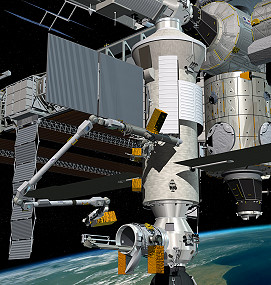 |
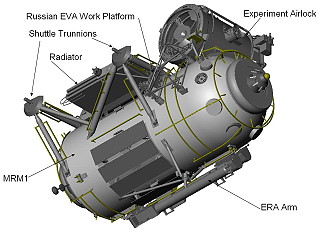 |
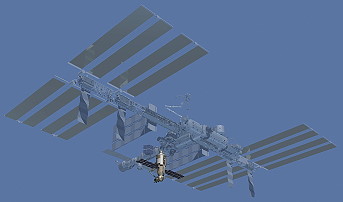 |
 |
 |
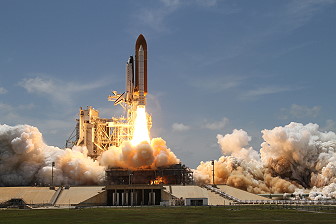 |
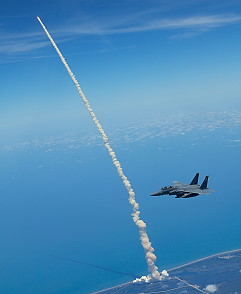 |
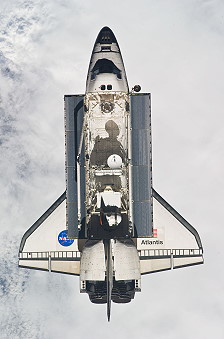 |
 |
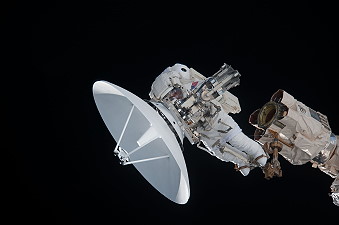 |
 |
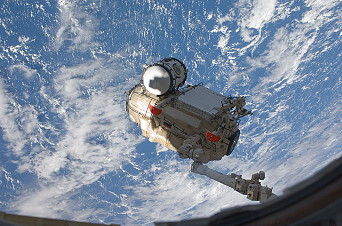 |
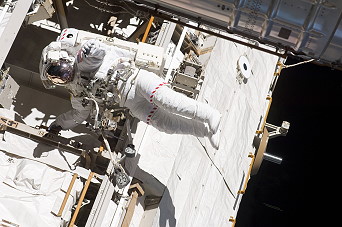 |
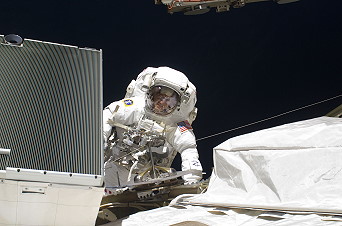 |
 |
 |
 |
 |
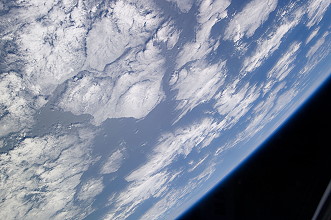 |
 |
 |
 |
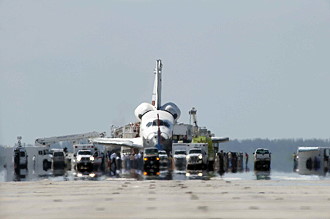 |
|
more EVA photos |
|
| © |  |
Last update on June 27, 2023.  |
 |